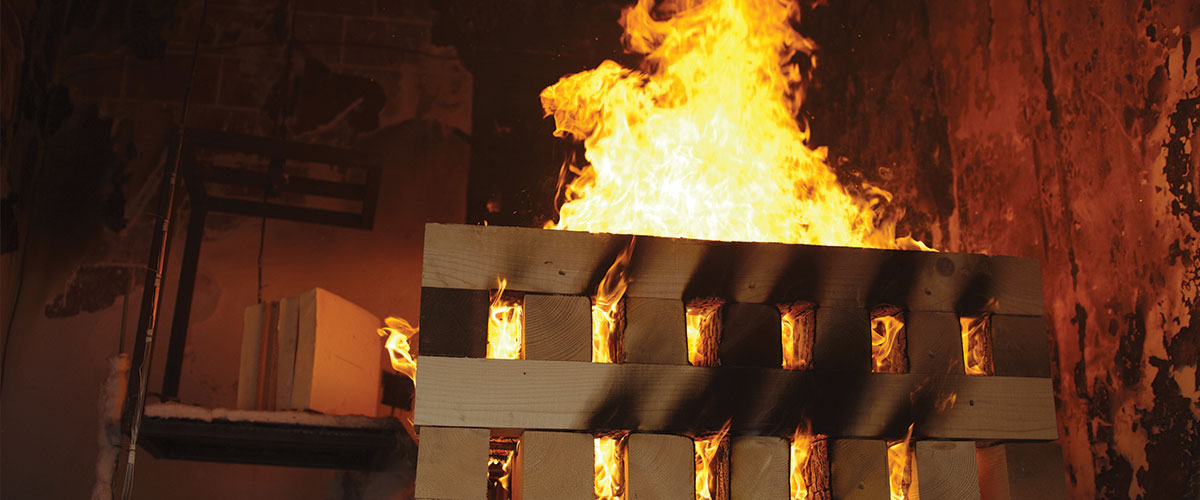Risk Mitigation
Developing a performance-based approach to Fire Safety Engineering

Point of origin (wood crib) on the ground floor of a residential building, summer 2016, Vendée, France.
Having in-depth knowledge of the behavior of a fire in a building is the linchpin of the performance-based approach to Fire Safety Engineering. In 2016, the CSTB's work progressed in two areas: smoke removal and fire resistance. The CSTB conducted tests under exceptional fire conditions using an approach combining calculation with full-scale experimentation. One of the experiments was conducted in the Vulcain modular furnace to test the fire resistance of tall panels. The other tests contributed to the study of smoke removal in a multi-story residential building, set on fire in Vendée, France.
Fire resistance of large structures
Large structures, increasingly used in industrial construction, are studied at the CSTB to optimize their sizing for fire-resistance purposes. The aim is to provide guarantees regarding the time needed to evacuate people in the event of fire before the structure collapses.
Thermomechanical calculation models already exist to simulate the fire behavior of 3-meter-high structures. Concerning 9-meter-high structures, research is currently based on the extrapolation of these calculations. To increase the precision of the analysis, the CSTB has developed a new calculation model specifically for structures higher than 3 m.
The fire resistance test at full scale, conducted at the Vulcain test facilityon a 9-meter-high load-bearing concrete wall, served to validate the model. In a world first, this fire resistance test subjected the test specimen, comparable in size to an airplane wing, to very high temperatures, up to 1,000°C, for 90 minutes.
The test results provide in-depth understanding of the deformation of a 9-meter-high concrete structure exposed to fire. By extrapolation, it will also be possible to characterize the fire behavior of walls higher than 9 meters, and to better understand the fire behavior of large horizontal building components.
Smoke removal study of a multi-story building
In closed spaces, such as a residential building, studying the phenomenon of smoke buildup is a key aspect of improving the conditions for evacuating people in the event of fire.
The CSTB used a fire testing campaign in a building with 4 levels to validate and enrich its digital models for smoke control. This represents genuine progress, because it showed how a staircase influences the spread of smoke in a multi-story building.
This campaign, conducted in July 2016 in an apartment building in Vendée, France, was designed by the CSTB and then coordinated with the Universities of Poitiers and Lorraine. These test fires were the first of their kind in France with such a broad scope: 15 researchers mobilized, 6 months of preparation, 3 days of testing, 2 fires set per day and 600 points of measurement in the building.
The experiments enabled the experts to create a complete, precise map of the phenomena at work: the flow of the smoke, but also the dynamics of the fire and the heat transfers. Since the testing, they have been modeling these phenomena and the results are expected some time in 2017.
In the long term, these studies will enable the CSTB to offer professionals more comprehensive Fire Safety Engineering solutions, combining simulations with full-scale testing. The stakeholders of the construction industry who take a performance-based approach will thus achieve greater creative freedom and a wider range of solutions for an optimal balance between cost and safety.




